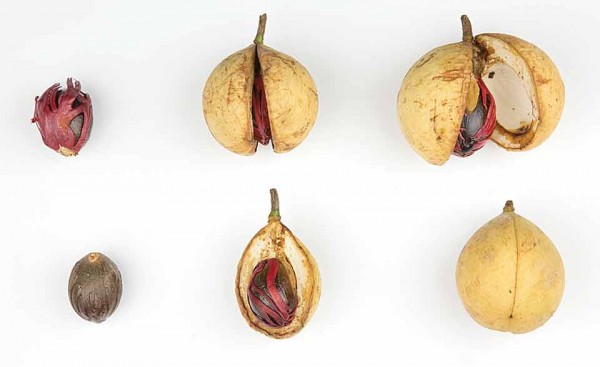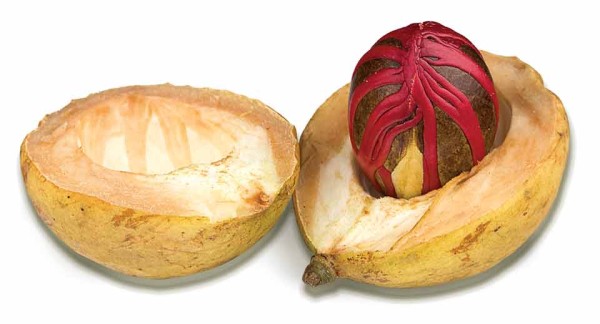Finding Virola guatemalensis
The search is on for ancient flavorings
After four years of searching, we still have not been able to find seven of the flavors used by the Maya 1,000 years ago.
For example, where is an actual orejuela tree (muc in K’ekchi Mayan)? Two years ago its leaves were common in the markets of Cobán, Alta Verapaz. Last month not one single vendor had them; they said people were drinking modern tea and bottled drinks and the interest in orejuela was waning. Hopefully, leaves from the orejuela trees are still in other markets, and we will work to rejuvenate interest in this flavoring, which was pretty much No. 1 for many Maya and Aztec peoples before European food arrived.
Nor have we found smilax bushes (or roots) nor the proper magnolia (Magnolia mexicana or Talauma Mexicana), which still most likely grows near Huehuetenango. The other trees we have not been able to find are itsimte, Clerodendrum ligustrinum, and the Virola guatemalensis.
With the help of Dwight Carter of Frutas del Mundo (near Río Dulce, Izabal) we were told of a spot near Puerto Barrios that had a pimenta gorda tree in flower (allspice). This spice is widely used to flavor chocolate and many other foods. While studying this tree one member of our team found a tree a few meters away whose fruit was almost identical to Virola guatemalensis. But I believe that its fruit may have been nutmeg, Myristica fragans. Nutmeg is from Asia; Virola guatemalensis is native to Mesoamerica.
Virola koschnyi is synonym of Virola guatemalensis. Virola koschnyi is known in Guatemala as banak or palo de sangre (Cordero and Boshier 2003:937). A dictionary (www.ars-grin.gov) indicates that “dry seeds are used for flavoring chocolate. The seed oil is used for making soap and candles. Whorled twigs are used like eggbeaters.” Using this twig to stir food may itself have a fragrance, which immediately reminded me of molinillo, Quararibea funebris, also known as rosita de cacao.
There is very little information available on Virola guatemalensis. This tree grows well here in Guatemala and has huge economic potential. But no local can give us enough information to find one.
Although I am not a botanist, I have worked with I have worked with plants long enough to understand a bit about the basics of classification. So Pseudobombax ellipticum, Pachira aquatica and Ceiba aesculifolia are all members of related species (formerly Bombacaceae, now sub-family Bombacoideae). You can see the relationship—just look at its flowers.
Yet, Virola guatemalensis and Myristica fragans look (to a lay person) almost identical. The nut inside the fruit has the most remarkable red “claw” clinging all around the surface. It looks like it comes from another planet.
So, our search continues. If you would like to be part of our endeavor, please contact us: FrontDesk@FLAAR.org. For example, our project really needs a 4WD vehicle, since some areas are rather remote. A 600mm prime lens would enable our team of botanists and photographers to get better photographs of flowers and fruits high up in a tree. Obviously it would be ideal for a major international chocolate company to cooperate with our project, since we have the best high-resolution photographs available of both cacao and pataxte, and gradually, each of the elusive ancient flavorings.
We have compiled an ever increasing list all plant substances that were used by the Maya and Aztec to flavor cacao beverages. Our specialty is the flavoring. (Visit www.maya-ethnobotany.org to view the on-going list.)
Dr. Nicholas M. Hellmuth is director of FLAAR Reports (Foundation for Latin American Anthropological Research). Contact: frontdesk@flaar.org

